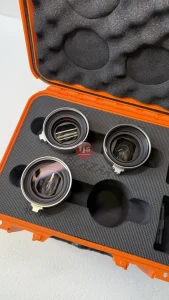When it comes to buying a camera lens, there are two main types to choose from: prime lenses and zoom lenses. Prime lenses have a fixed focal length, while zoom lenses allow you to adjust the focal length. One common question that arises is whether prime lenses are cheaper than zoom lenses. In this post, we will explore the cost differences between the two types of lenses.
1. Prime lenses
- – Prime lenses have a fixed focal length, which means that they are simpler and easier to manufacture.
- – This simplicity often results in lower production costs, making prime lenses more affordable than zoom lenses.
- – Additionally, prime lenses typically have wider apertures, which can also contribute to their higher cost-efficiency.
2. Zoom lenses
- – Zoom lenses are more complex and require more intricate manufacturing, resulting in higher production costs.
- – They also often have more advanced features such as image stabilization and weather sealing, which can also drive up their price.
- – However, zoom lenses offer more versatility as they can cover a range of focal lengths without the need to change lenses.
3. Which is cheaper?
- – In general, prime lenses tend to be cheaper than zoom lenses, especially when comparing lenses with similar features and quality.
- – However, there are exceptions to this rule, and some high-end prime lenses can be more expensive than low-end zoom lenses.
- – It’s important to compare prices and features before making a purchase to ensure you’re getting the best value for your money.
4. Which are more expensive?
While prime lenses are generally more affordable, there are some zoom lenses that can be significantly more expensive. High-end professional zoom lenses with advanced features such as a constant aperture throughout the zoom range or longer focal lengths can come with a hefty price tag and cost more than some prime lenses.
Ultimately, the decision between purchasing a prime or zoom lens comes down to personal preference and shooting needs. If versatility and convenience are important, then a zoom lens may be the better option despite its higher cost. However, if image quality is the top priority and budget is a concern, then a prime lens may be the more cost-effective choice.
Regardless of which type of lens you choose, investing in high-quality glass will always be worth it in the long run as it can greatly improve your photography skills and overall image quality.
Conclusion
Overall, while prime lenses are typically cheaper than zoom lenses due to their simpler manufacturing and wider apertures, there are many factors to consider when purchasing a lens. The best option for you will depend on your specific needs and budget. It’s always a good idea to do your research and compare prices and features before making a decision.








